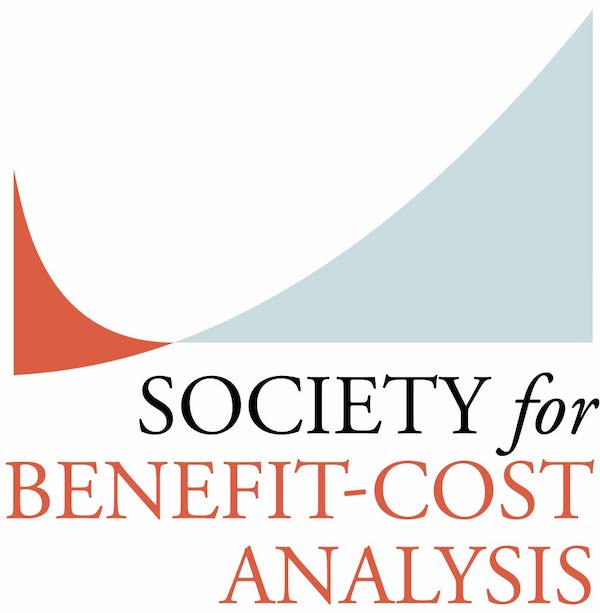On Balance: Some Clarifications Regarding Distributional Weighting
 The proposed revisions to Circular A-4 recently put forward by the Office of Information and Regulatory Affairs include guidance on applying what are referred to as "distributional weights." Costs and benefits to households and individuals with lower income are multiplied by a number greater than one, while those to households and individuals with higher income are multiplied by a number less than one. In the public comments on the proposed revisions, a number of criticisms of distributional weighting have been put forth, including:
The proposed revisions to Circular A-4 recently put forward by the Office of Information and Regulatory Affairs include guidance on applying what are referred to as "distributional weights." Costs and benefits to households and individuals with lower income are multiplied by a number greater than one, while those to households and individuals with higher income are multiplied by a number less than one. In the public comments on the proposed revisions, a number of criticisms of distributional weighting have been put forth, including:
- Distributional weighting conflates information about welfare with information about equity, undermining transparency.
- Distributional weighting introduces subjective value judgments into BCA;
- Distributional weighting puts a finger on the scale.
In our paper (Acland and Greenberg, 2023), we explicitly recommend that distributional weighting of the sort presented in the proposed revisions be adopted by federal agencies. As such, we feel that some clarification of our position is in order, in the hope that these criticisms may be better understood and laid to rest.
We begin by emphasizing that two justifications for distributional weighting have been historically put forth, only one of which is addressed in the proposed revisions. This justification is that a dollar means more to a poor person than to a wealthy person due to the diminishing marginal utility of income. Consequently, any given impact on the welfare (or utility, or wellbeing) of the poor is represented by a smaller number of dollars in BCA than the same impact on the welfare of the wealthy: if a poor person and a wealthy person experience the same increase or decrease in their welfare as a result of a policy, the dollar value of that welfare impact that is recorded in BCA will be smaller for the poor person than for the wealthy person, and will thus count for less in the net benefit calculated in the BCA. If this is ignored in BCA, then a bias results, because the welfare or utility of the poor is undercounted in dollar terms and that of the wealthy is overcounted. Applying weights based on the marginal utility of income at different income levels has been proposed as a way to correct this bias, so that a given dollar amount in BCA would represent the same welfare impact on the poor as on the wealthy. We call this "utility weighting."
The other justification for distributional weighting is that the welfare of the poor may simply be of greater importance to society than the welfare of the wealthy (the so-called "diminishing marginal moral value of welfare"). Thus, even after utility weights have been applied, to overcome the bias in willingness to pay as a measure of welfare, the idea some have is that the welfare impact on the poor should be inflated, using what we call “equity weights”, so that the impact of a policy on the poor actually counts for more in BCA than the impact on the wealthy. Unweighted BCA is biased against the poor. Utility-weighted BCA, if done correctly, is unbiased. Equity-weighted BCA is biased towards the poor.
We favor utility weighting but are opposed to equity weighting. To see why, let us evaluate the concerns about distributional weighting expressed above.
Utility weighting does not conflate information about welfare and information about equity. It simply corrects for a well-known bias in the measurement of welfare, leaving decision makers better equipped to assess tradeoffs between welfare and equity. Equity weighting does conflate information about welfare and information about equity. Two policies could have exactly the same equity-weighted net benefits, even though one increases welfare while decreasing equity while the other increases equity while decreasing welfare.[1] Equity weighting makes it impossible for decision makers to assess tradeoffs between welfare and equity, because it does not provide them with separate information about welfare and equity.
Utility weighting does not introduce value judgements into BCA. The diminishing marginal utility of income has been empirically documented hundreds of times. A consensus has emerged about the correct way to model it, using an iso-elastic utility function. And meta-analyses of the key parameter of this model, the income elasticity of marginal utility of income, have been conducted. All of this is simply a matter of empirical estimation of individual preferences, which is the foundation of all of BCA. This is positive economics. There are no value judgments. Only a choice of model and a set of estimation strategies.[2]
Equity weighting does introduce value judgments into BCA. When determining what weights to use to "correct" for the diminishing marginal moral value of welfare, one must, by definition, make a value judgement: what is the relative moral value of the wealthy versus the poor? That is precisely the kind of value judgment that should be left to decision makers. Even if the analyst attempts to empirically observe the moral judgments of the citizenry, and base equity weights on those empirical observations, he or she has still imposed a value judgement. This value judgment, and the task of assessing the tradeoff between welfare and equity, should not be introduced by analysts. It belongs in the hands of decision makers.
Utility weighting does not place a finger on the scale. Instead, utility weighting removes a finger from the scale, a finger that has advantaged the wealthy in regulatory impact analysis for far too long. With unweighted BCA you are measuring the utility people get from money using a ruler on which the units are far apart for poor people and close together for wealthy people. That must stop. Equity weighting does place a finger on the scale. Applying equity weights explicitly says that the poor have greater moral value than the wealthy. We do not disagree. We have both spent a large part of our careers pursuing the well-being of the poor and disadvantaged. But we feel strongly that the best way for economists to do that is to provide unbiased and separate information about welfare and equity, so that decision makers can use it to assess tradeoffs and apply their value judgments.
A different kind of criticism of distributional weighting – including utility weighting – is that making decisions on the basis of distributionally-weighted BCA causes Pareto inefficiency. The Pareto efficient way to regulate, it has been said, is to base all regulatory decisions on the potential Pareto criterion (aka unweighted BCA), and then turn all potential Pareto improvements into actual Pareto improvements using the tax system. We are in no position to refute this theoretical assertion, but we note that the tax code is not rewritten to address the distributional consequences of regulation in either the short- or long-run, and it is unlikely that it ever will be. That is simply not how the tax code is determined. In the absence ofthe necessary transfers, what decision makers need to know when making regulatory decisions is not whether the winners could pay off the losers in a hypothetical transfer, but whether the regulation under consideration increases aggregate welfare. That is what utility weighting achieves.
A final criticism of utility weighting involves interpersonal welfare comparisons. Unweighted BCA is not, in fact, a measure of welfare. It is strictly a measure of potential Pareto improvements. Applying utility weights, in an effort to make BCA a valid measure of welfare, it is said, runs afoul of the well-established impossibility of making quantitative interpersonal welfare comparisons. What if some people are simply better at turning consumption into welfare than others, even holding preferences and income constant? Using dollars, even utility-weighted dollars, as a measure of welfare is biased against the former and in favor of the latter. This criticism is overblown, however, because utility-weighted BCA does not require welfare comparisons at the individual level. It only requires that the ability to turn consumption into welfare is distributed uniformly across affected populations. If the poor were, on average, less(more) able to turn consumption into welfare than the wealthy, utility-weighted BCA, as a measure of welfare, would be biased towards(against) the poor. There is no way to determine the distribution of types in different populations, precisely because of the problem of interpersonal welfare comparisons. But in our view, the rebuttable assumption should be that the distribution of types is roughly the same across affected groups. Certainly, accepting that assumption seems like a small price to pay for turning BCA into an unbiased measure of welfare.
Many scholars and practitioners of BCA may feel that distributional weighting of the sort we endorse is a radical change, and that a conservative approach is called for. We both felt considerable trepidation along these lines when we embarked on our study of distributional weighting. But we have come to believe that what is truly radical is to make regulatory decisions in a manner that is biased against the poor. Despite the theoretical defenses of the potential Pareto criterion that have been rehearsed for the past eighty years, the fact is that making regulatory decisions on the basis of unweighted BCA is fundamentally inequitable. We feel that the time for tolerating this inequitability should come to an end.
Acland, D. J., & Greenberg, D. H. (2023). Distributional weighting and welfare/equity tradeoffs: a new approach. Journal of Benefit-Cost Analysis, 14(1), 68-92.[1] For example, the first policy might generate a utility-weighted benefit to the wealthy of 100 and a cost to the poor of 25, a gain in aggregate welfare but an increase in the welfare gap. The second policy might generate a utility-weighted cost to the wealthy of 100 and a benefit to the poor of 75, a loss of aggregate welfare, but a decrease in the welfare gap. With an equity weight of 2 on the welfare of the poor, both policies generate an equity-weighted net benefit of 50.
[2] And, as an aside, the scale-invariance of the utility function is addressed by the fact that the weight assigned to a given income level is the ratio of the marginal utility of income at some reference income (usually the median) and the marginal utility of income at the given income level.
